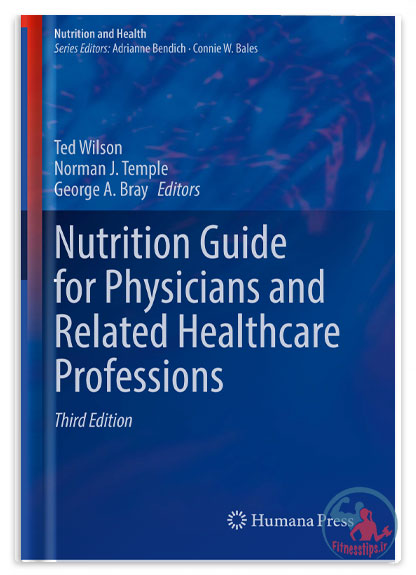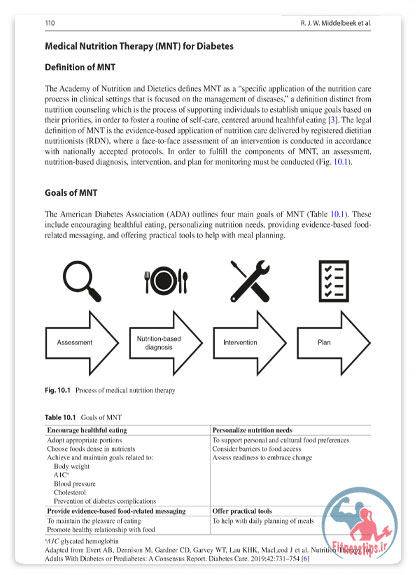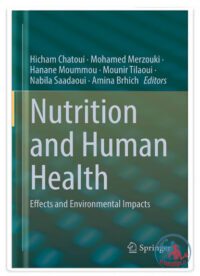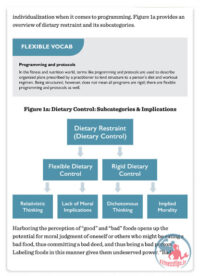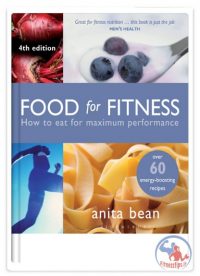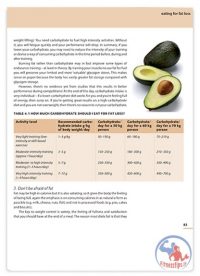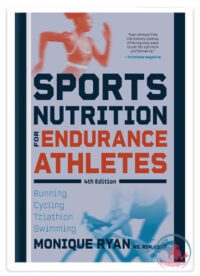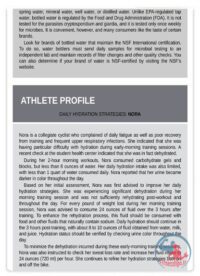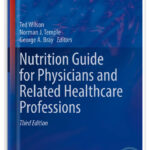کتاب راهنمای تغذیه برای پزشکان (Nutrition Guide for Physicians and Related Healthcare Professions)، یک مرجع جامع و بهروز در زمینه تغذیه و تأثیرات بالینی آن بر سلامت و بیماریها در طول چرخه زندگی است. این کتاب برای متخصصان حوزه سلامت، پزشکان و محققان طراحی شده است که به دنبال جدیدترین اطلاعات علمی در زمینه تغذیه هستند. با توجه به اهمیت تغذیه در مدیریت بیماریهای مزمن، این کتاب مجموعهای از مباحث کلیدی را گردآوری کرده است. اگر به دنبال یک راهنمای علمی و کاربردی در حوزه تغذیه هستید، این کتاب بهترین انتخاب برای شماست.
تمایزات کتاب راهنمای تغذیه برای پزشکان
- ویرایش کاملاً بهروز و گسترشیافته که جدیدترین یافتههای علمی را در حوزه تغذیه ارائه میدهد.
- ساختار منظم و کاربردی که به پزشکان و متخصصان کمک میکند بهراحتی به اطلاعات موردنیاز دسترسی پیدا کنند.
- پوشش کامل چرخه زندگی از دوران بارداری و نوزادی تا سالمندی و تأثیر تغذیه در هر مرحله.
- بررسی نقش تغذیه در پیشگیری و مدیریت بیماریهای مزمن مانند چاقی، دیابت، بیماریهای قلبی و سرطان.
- تحلیل علمی الگوهای مختلف تغذیهای از جمله رژیم مدیترانهای، رژیم DASH، رژیم گیاهخواری و رژیم کتوژنیک.
- بحث درباره چالشهای تغذیهای در بیماریهای حاد و جراحی مانند بیماریهای گوارشی، آلرژیهای غذایی، بیماریهای کبد و کلیه.
- توضیح تأثیر تغذیه بر تصمیمات سلامت شامل برچسبگذاری مواد غذایی، مکملهای تغذیهای و تأثیر تبلیغات گمراهکننده.
مخاطبان کتاب راهنمای تغذیه برای پزشکان
- پزشکان عمومی و متخصصان تغذیه که نیاز به یک راهنمای علمی و عملی دارند.
- پرستاران و داروسازان که در زمینه مشاورههای تغذیهای فعالیت میکنند.
- دانشجویان پزشکی و رشتههای علوم سلامت که به دنبال منابع معتبر و بهروز هستند.
- متخصصان حوزه تغذیه و رژیمدرمانی که به دنبال درک عمیقتری از تأثیر تغذیه بر سلامت هستند.
- محققان و اساتید دانشگاهی که به مطالعه پیشرفته در زمینه تغذیه و سلامت علاقهمندند.
- افرادی که به تأثیر تغذیه در پیشگیری و مدیریت بیماریها علاقه دارند.
- مدیران سلامت و سیاستگذاران حوزه تغذیه که در تدوین راهکارهای سلامت عمومی فعالیت دارند.
معرفی نویسندگان کتاب
- تد ویلسون (Ted Wilson, PhD) – استاد زیستشناسی در دانشگاه وینونا (Winona State University) ایالات متحده. او در زمینه تغذیه و فیزیولوژی تخصص دارد و تحقیقات گستردهای درباره تأثیرات تغذیه بر سلامت انسان انجام داده است. وی نویسنده و پژوهشگری برجسته در علوم زیستی و تغذیه است.
- نورمن جِی تمپل (Norman J. Temple, PhD) – استاد علوم در دانشگاه آتاباسکا (Athabasca University) کانادا. او متخصص در زمینه تغذیه، سلامت عمومی و تأثیر رژیمهای غذایی بر بیماریهای مزمن است. دکتر تمپل نویسنده و پژوهشگر برجستهای در حوزه علوم تغذیه بوده و تألیفات متعددی در زمینه تأثیر تغذیه بر بیماریهای متابولیک و نقش رژیم غذایی در سلامت انسان دارد.
- جورج اِی. بری (George A. Bray, MD, M.A.C.P., M.A.C.E.) – پژوهشگر مرکز تحقیقات زیستپزشکی پنینگتون، دانشگاه ایالتی لوئیزیانا. او یکی از پیشگامان در زمینه تحقیقات چاقی و متابولیسم انرژی بوده و بیش از ۵۰ سال تجربه در این حوزه دارد. دکتر بری تحقیقات گستردهای در مورد علل و درمانهای چاقی انجام داده و نویسنده کتابها و مقالات معتبر علمی در این زمینه است. وی همچنین در توسعه استراتژیهای تغذیهای برای مدیریت چاقی و بیماریهای مرتبط با آن مشارکت داشته است.
 نکات تناسب اندام | پُلی به دنیای بهترین منابع ورزشی
نکات تناسب اندام | پُلی به دنیای بهترین منابع ورزشی

